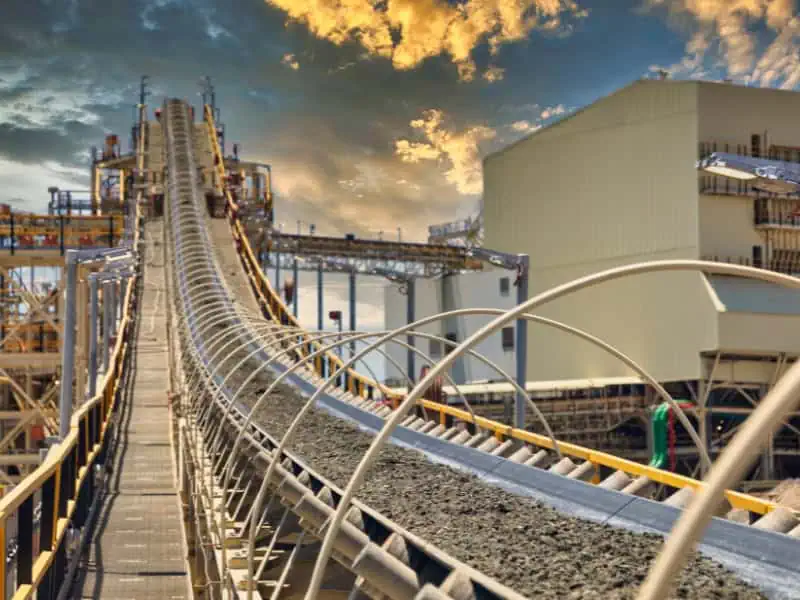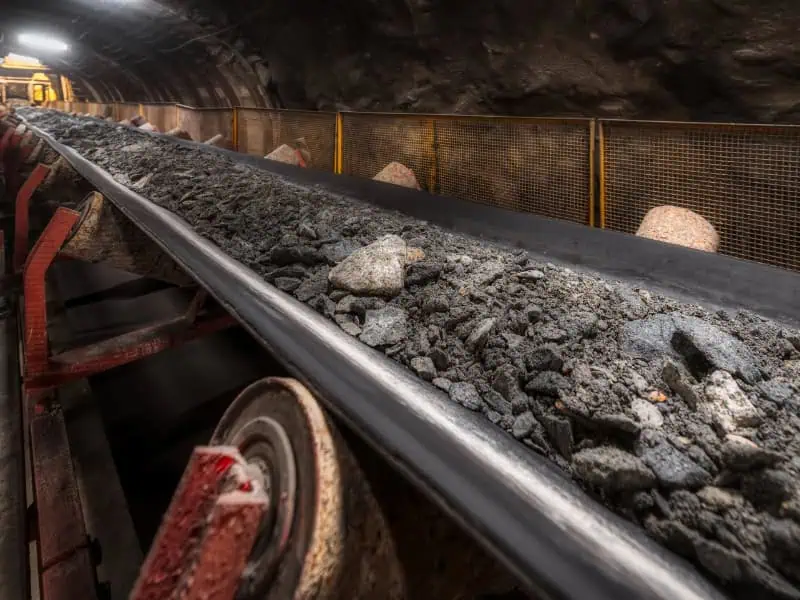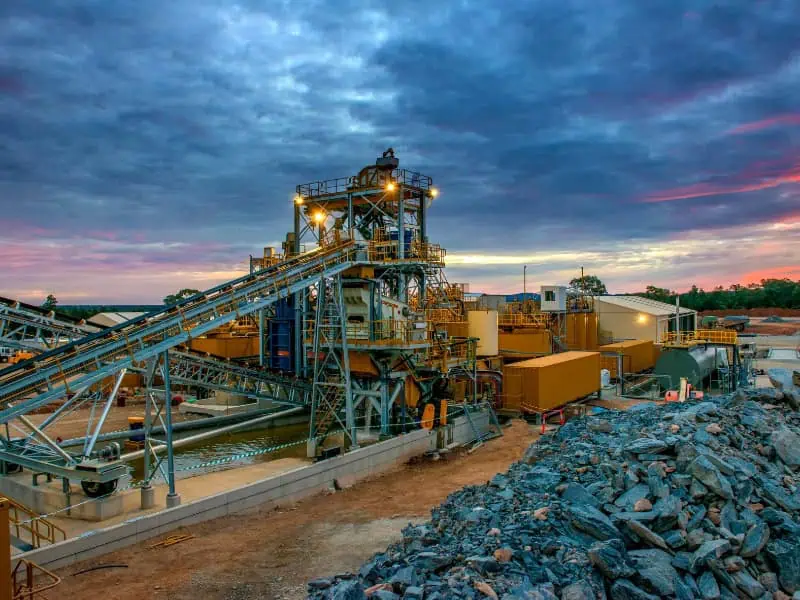Managing remote mining operations in Australia demands more than grit — it requires more intelligent systems. When transporting tonnes of material across vast, rugged terrain, a conveyor belt for mining industry use becomes not just practical, but essential. Unlike traditional haulage methods, conveyor systems provide continuous and reliable movement of materials over long distances with minimal manual handling. Remote sites present unique challenges: isolated locations, limited labour, unpredictable weather, and logistical complexity. These aren’t just minor headaches — they can cripple operations. Manual transport solutions like trucks or loaders, while common, often result in higher costs, slower cycle times, and increased safety risks. That’s where the mining conveyor system steps in. These setups improve operational efficiency, reduce reliance on skilled workers, and enhance site safety. Modular designs also enable fast installation and adaptability. Whether you’re operating in surface mining, underground tunnels, or crushing and screening zones, tailored conveyor belt solutions enhance material handling, speed, and uptime — all critical to maintaining productivity at remote sites.
How does a mining conveyor system ease remote logistics?
Setting up logistics at a remote mining site is a logistical minefield. Access roads may be nonexistent, supply chains are stretched thin, and local infrastructure is often poor. Relying solely on trucking can lead to high fuel costs, mechanical failures, and access delays — especially during harsh weather or seasonal shutdowns. Mining conveyor systems simplify this picture. Once installed, they enable consistent material flow without the need for constant vehicle or personnel movement. Benefits of a mining conveyor system in remote logistics:
- Reduce the need for road access and vehicle fleets
- Enable predictable, automated material flows
- Operate reliably across long distances and elevation changes
- Lower fuel use and emissions
- Minimise delays from breakdowns or road conditions
One major perk is reduced labour demand, which is ideal for isolated locations struggling to source or house skilled workers. Another is heavy-duty applications, as mining belts can move everything from overburden to fine ore without needing different equipment. With fewer moving parts and automated control, conveyor systems bring a level of consistency that’s hard to beat.
What makes a mining conveyor system reliable in tough terrain?

Australia’s mining zones don’t always come with ideal geography. Hills, cliffs, ravines, and soft soil make traditional equipment inefficient or unsafe. Here’s where conveyor systems earn their keep. Overcoming terrain challenges is a core design advantage. Engineering advancements have made it possible to build conveyors across harsh environments with ease. Key reliability factors in terrain-heavy sites:
- Modular frames that adapt to gradients and curves
- Custom supports that anchor in rocky or shifting soil
- Enclosed systems that protect from dust, wind, or debris
- Variable speed drives to control load handling
- Remote monitoring for early fault detection
Advanced systems also feature improved conveyor belt construction for mining, including reinforced rubber compounds and metal-cored belts that can withstand abrasion, heat, or impact. This not only boosts efficiency but also improves uptime.
Harsh topography no longer spells high maintenance or operational delays when systems are built for purpose. Challenging terrain can shorten equipment lifespan when not appropriately engineered. Built-for-purpose conveyors adapt better to site-specific obstacles.
How do modular mining conveyor system designs speed up setup?
Speed is critical when establishing remote mining infrastructure. You want to start production fast — not spend weeks building access or running cables.
That’s where modular conveyor systems shine. These pre-engineered sections are delivered ready for rapid on-site assembly. Modular design advantages:
- Prefabricated components minimise construction time
- Plug-and-play systems reduce the need for skilled labour
- Scalable lengths and layouts suit various site footprints
- Easier disassembly and relocation if site changes
- Lower capital investment for temporary setups
And here’s the clincher: modular systems support automation and safety with integrated sensors, emergency stops, and remote operation as standard.
A flexible setup also improves performance — especially where terrain requires customised gradients or mid-stream transfers. That adaptability supports both temporary and long-term mining conveyor installations. Here’s a quick table showing setup time comparisons:
| Conveyor System Type | Setup Time (Average) | Labour Requirement | Ideal Use Case |
| Modular Pre-Engineered | 1–2 weeks | Low | Remote, fast-start projects |
| Fixed, Custom-Built | 3–6 weeks | High | Permanent, high-capacity sites |
| Truck-Based Haulage Only | Ongoing | Medium | Short-term or transitional use |
This agility becomes vital when managing mobile operations or adjusting to evolving mine layouts. As operations scale, conveyor systems scale with them. Modular conveyors cut setup times dramatically.
What features help a mining conveyor system withstand harsh weather conditions?

Out in the bush, weather’s not just inconvenient — it’s operationally critical. Systems exposed to torrential rain, cyclonic winds, or baking heat need to work anyway. Mining conveyor belt applications in mining include weather-proofing features by design. Typical design features for weather resistance:
- Galvanised or stainless-steel frames for corrosion resistance
- Water-shedding covers or enclosed belts
- Drainage systems to prevent pooling and slippage
- Fire-resistant belt compounds
- Wind barriers and support structures for stability
This makes systems more dependable in regions prone to flooding, dust storms, or extreme temperature swings. You avoid unplanned stops and extend operational windows, which are crucial when weather knocks out your alternatives.
This is also where advancements in mining conveyor belts come into play — with new belt coatings and monitoring tools that detect heat, humidity, or wear early. Here’s where performance also links to how conveyor belt tension impacts performance. Proper tensioning extends belt life and avoids slippage or damage under load. Poor weather protection increases repair costs and downtime risks.
How can operators extend conveyor lifespan through upkeep?
A conveyor isn’t set-and-forget — especially in mining. Operators need a proactive maintenance mindset to get the full return on investment. Fortunately, modern systems make upkeep easier and smarter. Maintenance strategies that extend lifespan:
- Condition-based monitoring using sensors
- Predictive maintenance scheduling
- Automatic belt cleaners and tensioners
- Remote diagnostics and alerts
- Easy access to wear parts for fast swap-outs
You’ll also want to follow conveying systems training standards in Australia to ensure operators know how to inspect, adjust, and respond. The result? Fewer unexpected breakdowns, reduced safety incidents, and better asset utilisation. Smart maintenance keeps production running smoothly without constant repairs.
Why are conveyor systems safer for isolated workers?
When your workforce is small and spread out, safety risks rise fast. You don’t always have backup nearby if something goes wrong. Conveyor systems offer built-in safety benefits by reducing manual handling and vehicle movement.
Safety advantages of the mining conveyor system:
- Lower exposure to moving machinery or haul trucks
- Emergency stop mechanisms at multiple points
- Enclosed designs protect against material spillage.
- Automated start/stop sequences reduce the risk of error.
- Reduced fatigue from repetitive vehicle driving
And with remote monitoring, operators can track system status from a central control point, even kilometres away. Systems also support specific applications in mining, whether surface, underground, or processing — each with tailored safety mechanisms suited to the work environment. This shift in how labour interacts with machinery also ties to standard roller conveyor uses in worksites, where simplicity reduces error-prone interactions. Failing to train operators can undo system safety gains.
Conclusion: Hiring conveyors to enhance flexibility
Remote mining success hinges on innovative, durable systems — and a mining conveyor system delivers precisely that. These setups simplify logistics, withstand harsh terrain, and improve safety where resources are thin. They simplify logistics, withstand harsh terrain, and enhance safety in areas where resources are scarce. For miners chasing agility, hiring modular conveyor setups offers serious upside. Need a temporary haul line? Quick expansion? A weather-resistant bypass? No worries — rental options get you moving without significant up-front costs. Discover what Conveying & Hoisting Solutions offers for remote sites. They provide robust systems built for Australia’s most rugged worksites. Hiring systems add flexibility without long-term risk.




